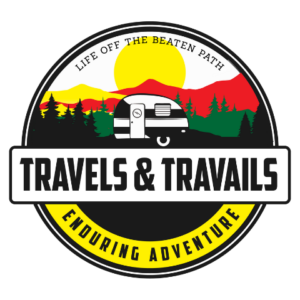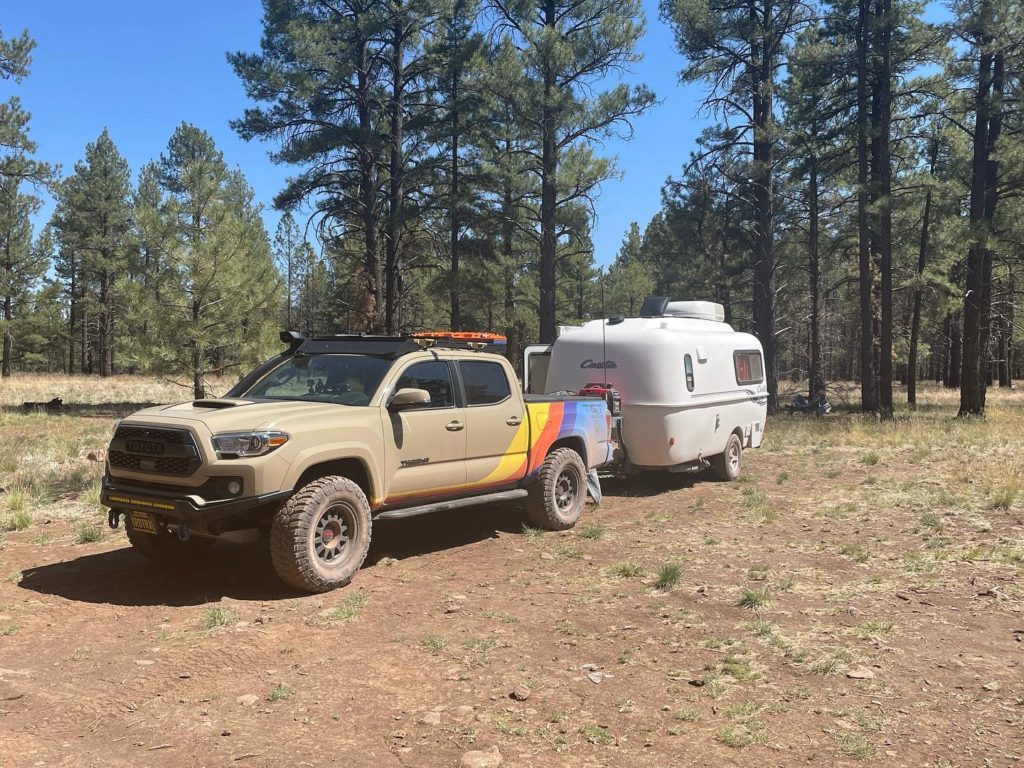
Since the start of the pandemic, campgrounds have been packed and reservations are hard to find. If you do get a site, people are jam-packed into campgrounds. Campground pools, showers and laundromats are full. This may leave you asking, “Where can you camp without a campground?”
Here are several places you can camp in the US without a campground:
- National Forest
- Bureau of Land Management (BLM)
- HipCamp
- Harvest Hosts
- Walmart or Cracker Barrel Parking Lots
Read more to find out about different places you can camp without a campground and stay tuned to find the advantages of camping outside of a campground.
National Forest
The National Forest is one of the best places to camp and one of my favorite places. Initially, it’s a little tricky to find camping on National Forest land, but once you figure it out, you’ll never want to go back to camping in campgrounds. There are a few ways to find camping on National Forest land. Perhaps the easiest way to find a campsite on National Forest land is with an app. There are several apps to find camping, but here, we’ll focus on the apps to find camping in the National Forest.
Campendium
My very favorite app to find camping in the National Forest is Campendium. Campendium gives you the low down on all kinds of camping and even includes reviews. But one of its best features is information and reviews on dispersed camping. Campendium will give you information on what types of rigs can get into each site and even gives you GPS coordinates for the site. It will also tell you how good the cell signal is for each carrier. Campendium will give you the elevation, so you can anticipate the temperature and the maximum number of days that you can stay in that location. Often you can find details on the size of rig that will fit in each site by looking at the reviews.
iOverlander
IOverland is another app that we use to find dispersed camping in the National Forest. While Campendium has more information about dispersed campsites, iOverlander has a larger number of places to camp that are off the beaten path. This app will also give you GPS coordinates and altitude, but the rest is dependent upon the information that the what the app user uploaded. Some people are very thorough in the information they provide while others are brief. Normally, they will tell you the type of rig you need to access that particular spot along with the conditions at the time they were there. Conditions vary upon use and weather.
Gaia GPS
While Campendium and iOverlander are free, Gaia GPS is a paid app that is more of a navigation app. In some locations, Google Maps may not be able to guide you to a location. That’s where Gaia GPS comes in. You add the GPS coordinates to the app and Gaia will help you navigate to your destination. You can also add layers to the app to make sure that you are actually on Forest Service land and not on private property.
| Campsite Type | Best For |
| National Forest | When you want to get into the forest and off the beaten path |
| Bureau of Land Management (BLM) | When you want to camp in the desert and get off the beaten path |
| HipCamp | When you want the atmosphere of a campground without the crowds |
| Harvest Hosts | When you want to do a little glamping for a bargain price |
| Walmart or Cracker Barrel Parking Lots | When you are traveling through and need a free place to sleep |
The National Forest has stay limits, normally 7-14 days. This keeps people from living on Federal lands. Be sure to check the stay limits before you go.
Bureau of Land Management (BLM)
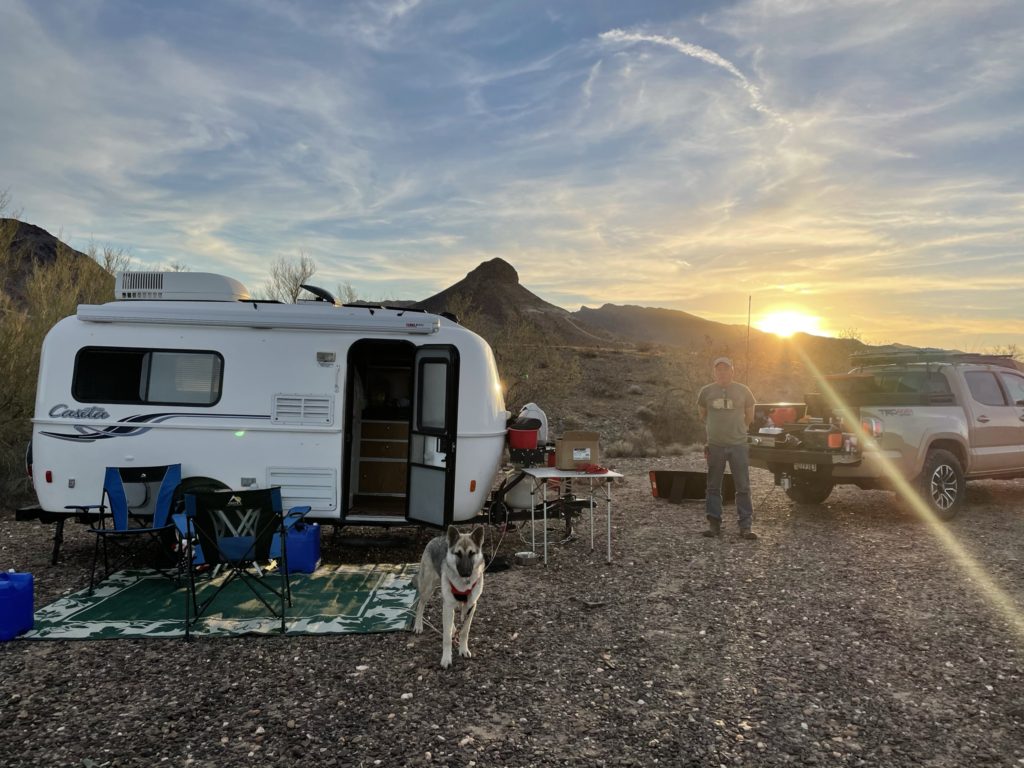
The Bureau of Land Management (BLM) is similar to the National Forest. BLM offers dispersed camping in many areas. All of the apps mentioned above can be used to find camping in BLM. BLM and National Forest are two different federal government entities. BLM land is often found in desert areas, but you can also find BLM camping areas in places where livestock graze, since cattle grazing is part of the BLM charge.
Be sure to fill your water tanks before you go and consider carrying extra water. The desert is not a place where you want to skimp on water.
Considerations for National Forest and BLM Camping
When you camp in the National Forest and on BLM land, there are some things you need to know.
Understanding the Terrain
When you camp in the National Forest and on BLM land, you must know the kind of terrain that you will encounter and understand the capability of your rig. Be sure to scout ahead if you are not sure that the site or road will accommodate your vehicle. We normally scout ahead by walking the road or site to evaluate whether or not we can negotiate the terrain. Some people tow jeeps or other capable vehicles and can use those to scout out a site. Any kind of water can be treacherous. Your rig can get stuck in an inch of mud. Evaluate the route with care keeping in mind water, mud puddles, rocks, and brush. Be sure to allow enough room to maneuver your rig and turn it around. Once we got ourselves into a situation where the brush was very close together which made it very difficult to turn our travel trailer around.
National Forest and BLM Rules
If you want to camp in the National Forest, you have to follow the rules. Unlike a campground, there are no amenities. There is no trash pickup, water faucet, or waste disposal. You’ll need to bring all your water, pack out all your trash, and carry out your poo. If you are camping in an RV with a bathroom, you’ll have to wait to dump your tanks until you get out of the forest and into a dump station. Be sure to fill your water tanks before you go and consider carrying extra water. Check out this video on leave no trace. Many campsites have been shut down because travelers have not respected the land and followed the rules. Both the National Forest and BLM have stay limits. Be sure to check the stay limits online before you go.
HipCamp
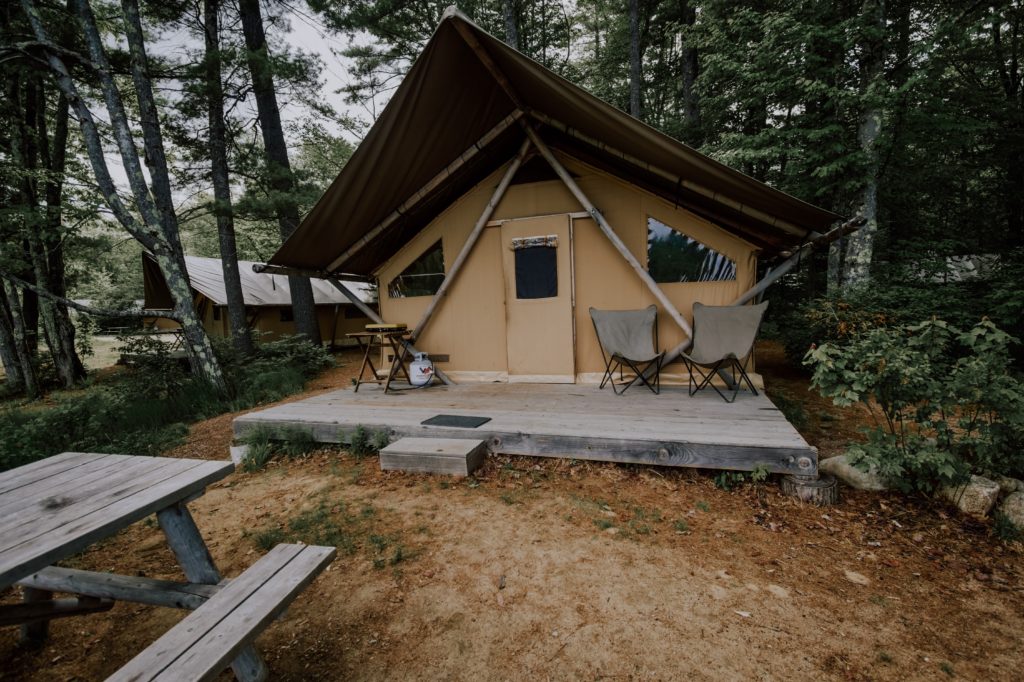
HipCamp is the Airbnb of camping. Using the HipCamp website, you can book a campsite on private property. HipCamp offers tent camping, RV camping, glamping, and cabins. They also have an app where you can find all these camping locations. The app gives you site details and user reviews. It lists site amenities, prices, and other details like whether or not you can bring your dog. Once you choose your site, you can reserve it right on the app or website. While HipCamp has so many camping options, one downside is the price. To me, the prices are high compared to a comparable campground. The flip side is that you’ll have a unique camping experience like one that you’ll never find at any campground.
Harvest Hosts

A Harvest Hosts membership allows you to stay at wineries, breweries, distilleries, and farms for a small annual membership fee. With over 3500 camping choices in the US, Canada, and Baja, Harvest Hosts gives campers the freedom to stay overnight in an exclusive location. There are a couple of caveats to using this membership. First, you can only book a stay for one night. Second, you must have a self-contained vehicle. Tent trailers are excluded; however, hybrid trailers can camp at Harvest Hosts locations. We have primarily used our Harvest Hosts membership as an overnight stopping point on a longer trip or as an overnight getaway closer to home. Of course, you are encouraged to make a purchase the Harvest Host where you stay. And with all the delightful offerings, there isn’t any reason why you wouldn’t want to.
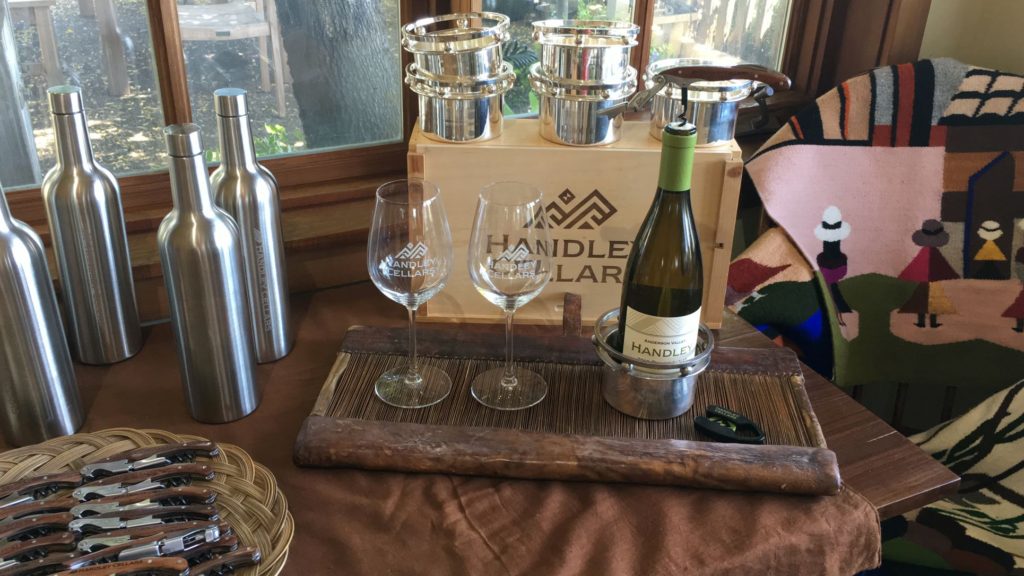
Walmart or Cracker Barrel Parking Lots
While not as glamorous as the other camping options I have mentioned, Walmart and Cracker Barrel Parking lots offer a free overnight stay. Its a decent place to camp if you are in route to another camping location. Of course, you’ll need a self-contained RV to camp in these parking lots. Some businesses allow overnight parking and other do not. Some apps like Campendium or the Dyrt will give you an indication of whether or not overnight parking is allowed. Still, check with the Walmart or Cracker Barrel before you park there overnight.
Advantages to Non-Campground Camping
1. Escape the Campground Bustle
Under ultimate conditions, campgrounds are great places to camp. However, some campgrounds have no campground host or rangers that don’t enforce the rules.
A single mother and her children were camping at a municipal campground when two drunk guys at an adjacent campsite were screaming at each other. Apparently, one of the men had a gun in his camper and the other man was telling everyone at the campground about it at the top of his lungs. The ranger, who was not a law enforcement officer, refused to call the sheriff. Another camper did call the sheriff and the rowdy men were escorted out of the campground, but it ruined the single mother’s trip.
Campgrounds are noisy. If you don’t like the sounds of generators, screaming children, and loud music, alternatives to campgrounds are a way to go.
Campgrounds are crowded. At many campgrounds, campers are situated right next to each other with not much space in between. If you enjoy meeting new people, a campground is the way to go. If not, try an alternate form of camping.
2. Unwind and Disconnect
I love the quiet of camping in nature. At some of the places where we have camped, there is no cell phone signal. Granted, it takes me a while to disconnect. On the first day, I usually pick up my phone several times only to realize that I don’t have a signal. It’s good to get away and disconnect. Especially if you have a stressful job and can’t disconnect from it at home. Read a good book. Go on a hike. These things are good for you and will fill your soul. You won’t be able to do this at a Walmart Parking lot, but the National Forest, BLM, Harvest Host, and HipCamp locations will allow you to unwind and some will allow you to disconnect.
3. Be One with Nature
Instead of connecting with the outside world, connect with nature. Bring a book on birding to your campsite. Listen to the birds and try to identify them. Put up a hammock and relax under the stars. If you have a sky app on your phone, pinpoint planets and constellations. We live in a go-go society where we feel like we have to be productive all the time. Take a few days to just be. Bring some binoculars to search for wildlife. Try to identify plants and insects using a magnifying glass. If you have children, watch them play in the dirt and make their own fun.
Conclusion
No matter where you camp, you can have an enjoyable time. Camping outside of a campground gives you more options to get outside and enjoy yourself.
